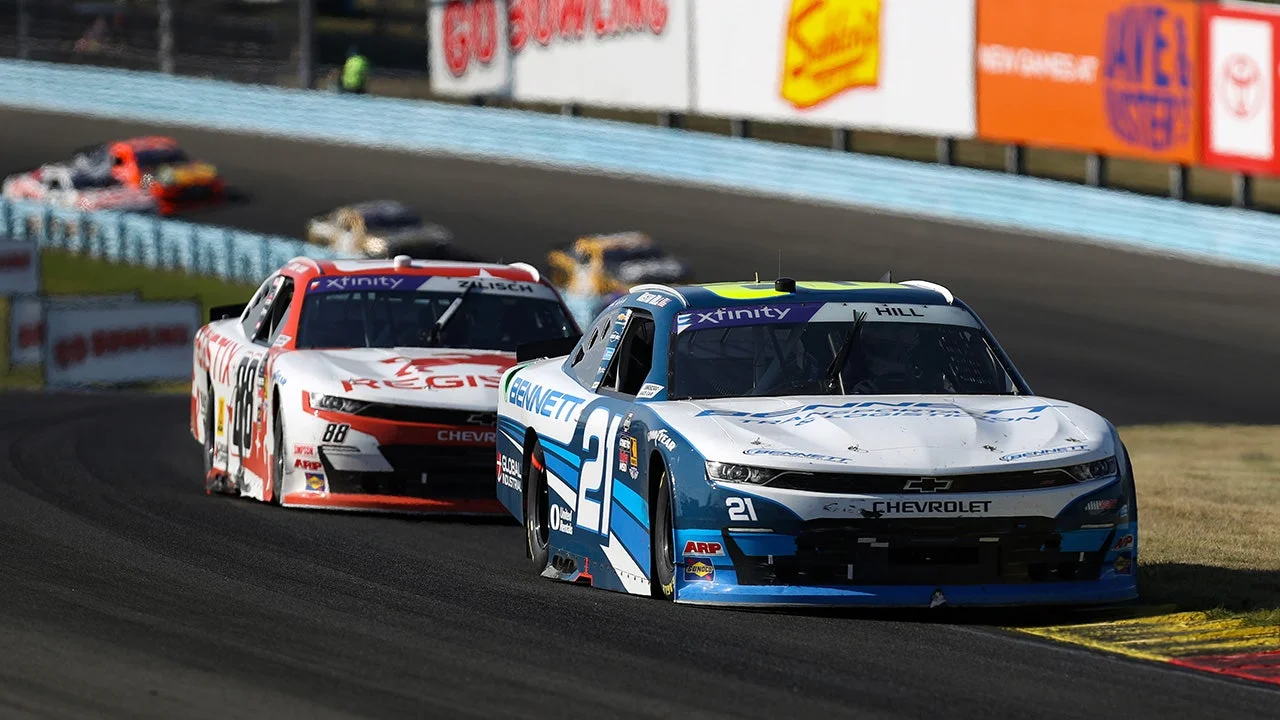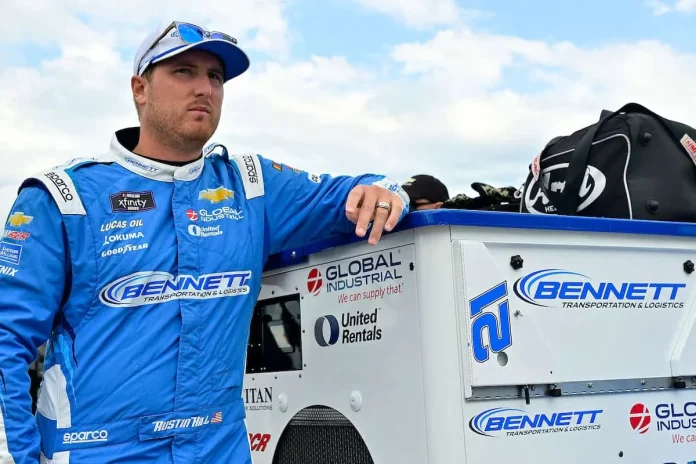Dale Earnhardt Jr. sharply disputed Austin Hill’s explanation for his actions in the recent Indianapolis Motor Speedway crash, intensifying the Austin Hill Indianapolis incident controversy. Earnhardt Jr. directly challenged Hill’s claim that the contact with Aric Almirola was accidental, questioning the driver’s intentions and sparking debate among NASCAR insiders.
Earnhardt Jr. Questions Hill’s Justification After Collision
The controversy ignited after Dale Earnhardt Jr., a respected figure in the racing world, discussed Austin Hill‘s post-race justification regarding the crash with Aric Almirola. According to Earnhardt Jr., Hill’s insistence that the left turn into Almirola was unintentional did not hold up under scrutiny, casting doubt on Hill’s narrative and fueling speculation about the real motive behind the move. Hill, competing for Richard Childress Racing, was battling for position with Almirola and Sheldon Creed when contact occurred.
During the intense battle for fourth place, Almirola attempted an inside pass on Hill, making minor contact in the process. This left Hill’s car briefly unstable and at risk of losing ground. However, as the cars exited the corner, Hill maneuvered aggressively back to the left, making significant contact with Almirola’s rear, ultimately sending both cars out of the race. This sequence of events became the focal point of heated debates about Hill’s intent and sportsmanship.

“It wasn’t, it wasn’t a right hook,” Earnhardt Jr. said in the recent Dale Jr Download podcast. “No, it wasn’t a right hook at all. It wasn’t a right hook. This is not the same thing that happened at Indy. Even though he still says that he didn’t do it intentionally at Indy. I don’t buy it. I don’t think anybody does. But this was racing. And is it avoidable? Yes.”
Earnhardt Jr. expressed clear skepticism regarding Hill’s defense, highlighting a disconnect between Hill’s explanation and how other racing professionals perceived the incident. The consequences for Hill escalated after NASCAR issued a significant penalty following the wreck, a decision that signaled the governing body’s intent to address such controversial on-track actions.
Austin Hill Stands by His Account of the Incident
After the Xfinity Series race at Indianapolis Motor Speedway, Austin Hill spoke candidly about the moments leading up to the crash, adamantly maintaining that his action was not deliberate. Hill, emphasizing his experience and judgment, denied any loss of composure or intent to retaliate. In his statement, Hill sought to clarify his mindset during the incident, defending his professionalism and strategic approach to racing.
“From my standpoint, it was fully unintentional. It wasn’t one of those lose your mind moments and turn to the left. I feel like I’m a smarter racer than that. If I was mad about him getting into the back of me, I would have waited until Turn 1 and shipped him like he shipped me in Turn 3. That would have been it. I would have moved him out of the groove and went on,” he said.
Hill’s comments fueled ongoing debate within the community, as fellow drivers and fans weighed the merits and credibility of his account. The controversy over intent and the differing interpretations of Hill’s conduct exposed the complexities of driver etiquette and judgment under race pressure, especially during high-stakes moments in major events at tracks like Indianapolis.
Penalties and Comparisons Raise Unresolved Questions
The NASCAR decision to penalize Austin Hill sharply contrasted with past incidents involving other drivers, bringing additional scrutiny to the organization’s consistency. For example, there were notable moments when Cup Series competitor Carson Hocevar was involved in similar on-track confrontations—such as tagging Ricky Stenhouse Jr. and causing a loss of positions—yet Hocevar did not face penalties of the same severity. These disparate responses renewed broader debates about enforcement, bias, and the need for clear standards in officiating aggressive racing conduct.
Key figures like Sheldon Creed, Richard Childress Racing, and others continue to play central roles in shaping the evolving discourse, keeping the incident firmly in the spotlight of the NASCAR community. As the Austin Hill Indianapolis incident controversy lingers, pressure mounts on both officials and drivers to define the boundaries between hard racing and unacceptable aggression, with significant implications for future races and the reputations of those involved.


